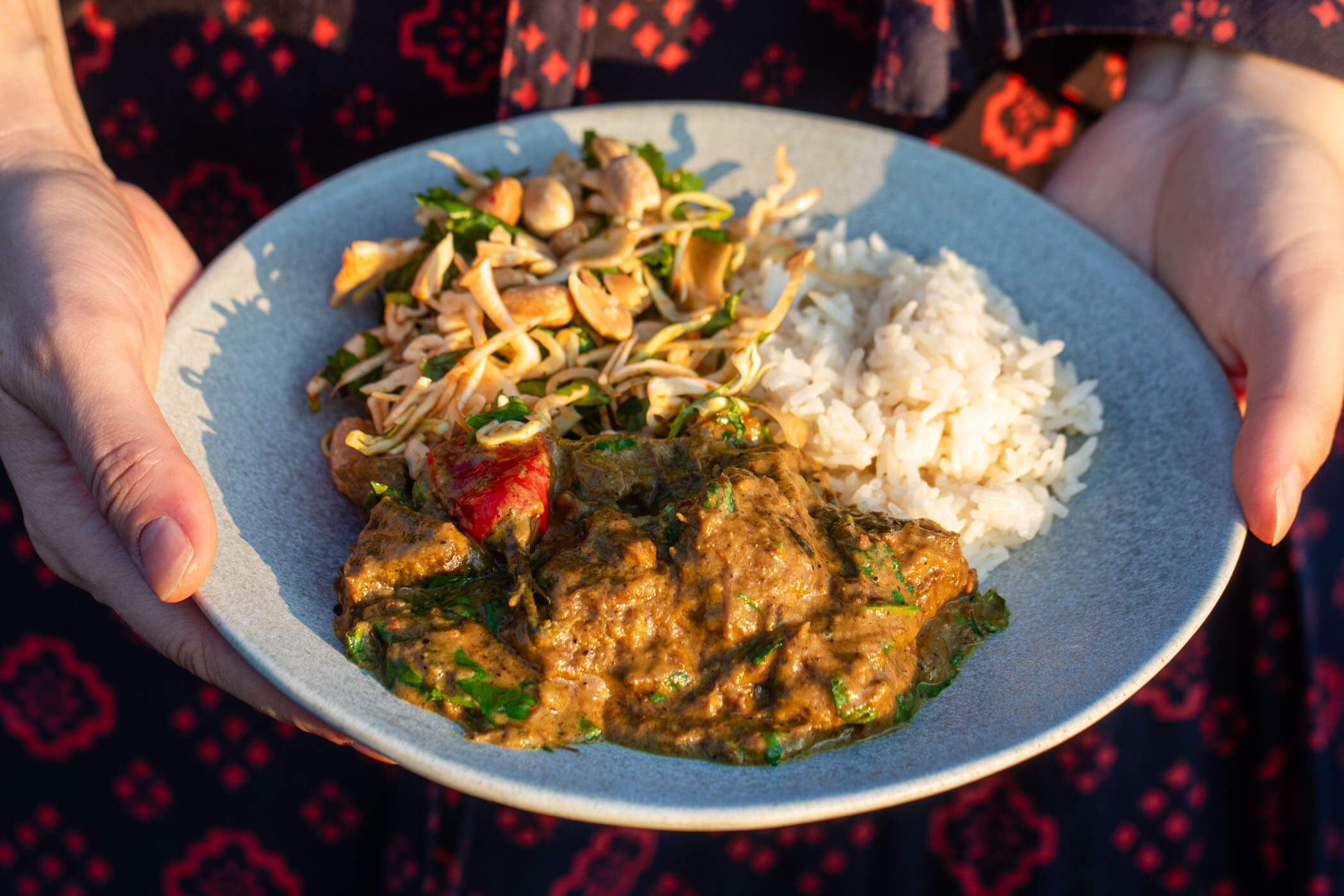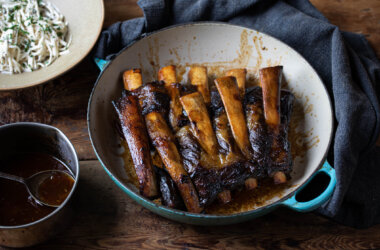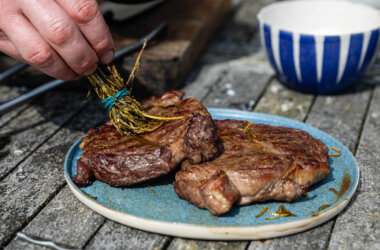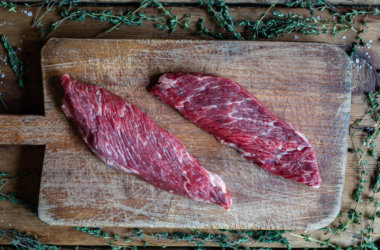
The Ultimate Beef Rendang Recipe is a deeply seductive dish and a slow-cooked staple of both Indonesian and Malaysian cuisine. The Indonesian style tends to be drier and more reduced, whilst the Malaysian version is a little wetter. I love both.
Beef shin is the perfect cut, holding its shape while becoming beautifully tender and gelatinous. I tend not to stray far from tradition when cooking dishes with deep cultural roots, and this rendang is no exception.
To serve alongside, I’ve created a Fresh Cucumber and Cabbage Salad with Roasted Peanuts. Whilst not traditional, it’s inspired by classic pairings. Cucumber is often served with rendang, either fresh or pickled, and this version plays a similar role, acting almost like a relish. Its sharpness and sweetness cut through the richness of the beef, offering freshness and contrast without feeling out of place. It’s also a versatile side in its own right, pairing well with grilled meats or simply spiced cuts.
Serves 4-6
Ingredients
Method
How to Make Beef Rendang
- Tap the seeds from the dried chillies and soak the flesh in a little boiling water for at least 20 minutes. Remove the tough base and outer layer from the lemongrass. Trim the long fibrous end, then finely chop the thicker base. Add to a pestle and mortar and pound to a rough paste.
- Add the soaked chilli flesh, chopped shallots, peeled garlic, cloves, and chopped ginger (no need to peel). Grate in the nutmeg. Continue pounding until well combined and the paste has a fairly even texture.
- Heat the oil over a low to medium heat in a heavy-bottomed pan, ideally one suitable for simmering. Add the paste and stir continuously until it changes colour and the rawness has cooked out. This will take about 10 minutes. If it begins to catch, reduce the heat and scrape the bottom of the pan with a wooden spoon to prevent sticking.
- Add the cinnamon and turmeric, stir briefly, then add the beef and salt. Increase the heat and stir well to coat the meat in the paste and spices. Cook until the beef releases its moisture and that liquid has evaporated. You’ll know it’s ready when it begins to sound like it’s frying rather than boiling. Continue cooking for another 10 minutes.
- Pour in the coconut milk and stock or water. Reduce the heat to a gentle simmer, then add the bay leaves, lime leaves, and tamarind. Simmer gently, stirring occasionally. Cooking time will vary, but allow around 2½ hours as a guide.
- At this point, you can choose to leave the rendang a little wet, as pictured, or continue to reduce it to a darker, drier and slightly more intense finish.
- Top with fresh coriander and serve with jasmine rice and a Fresh Cucumber and Cabbage Salad with Roasted Peanuts.































